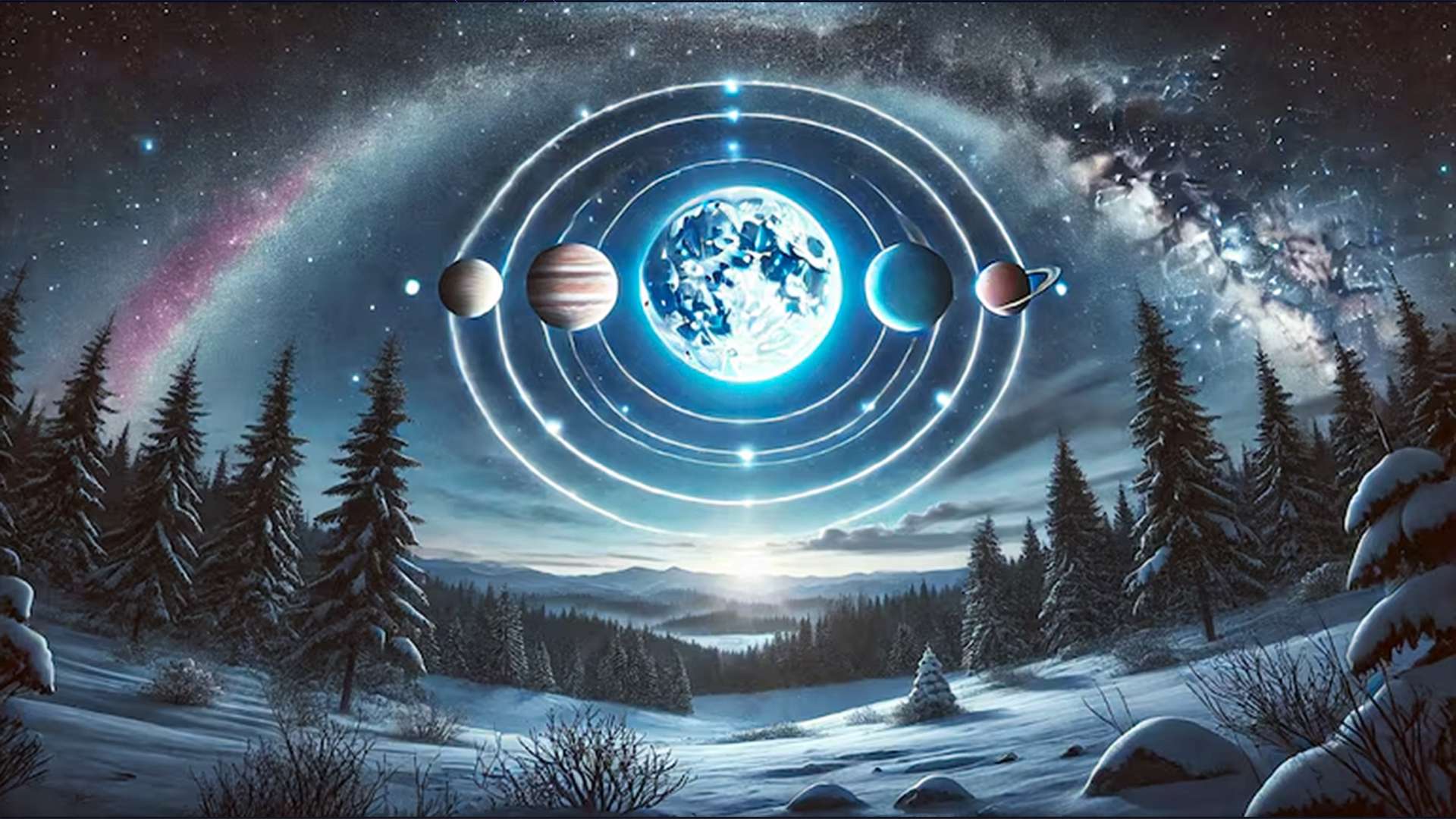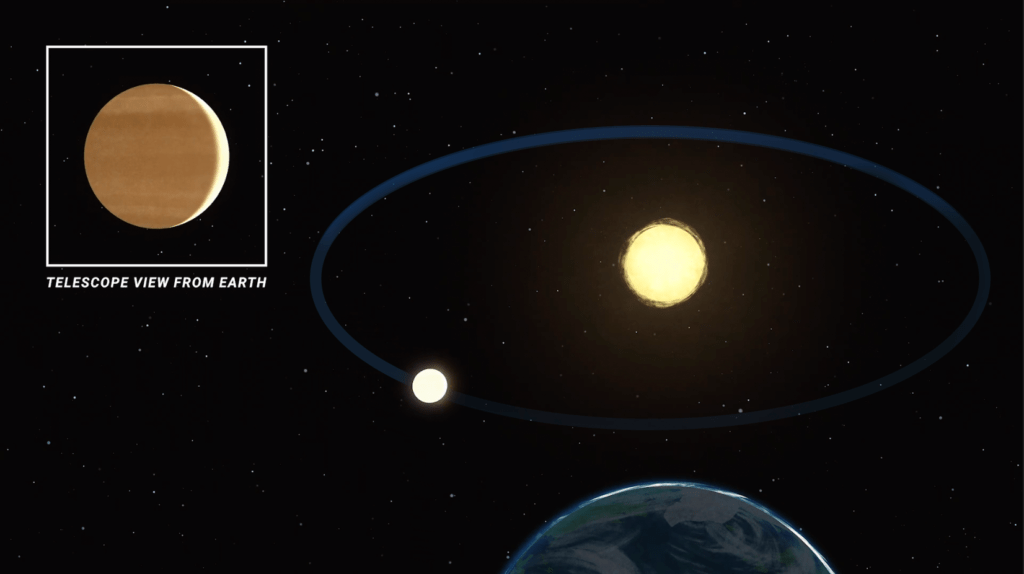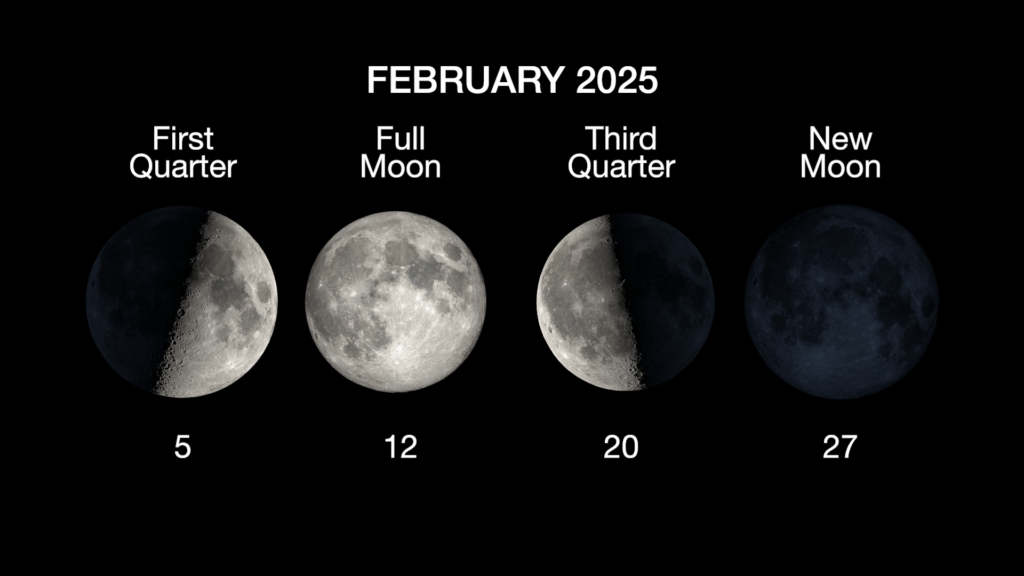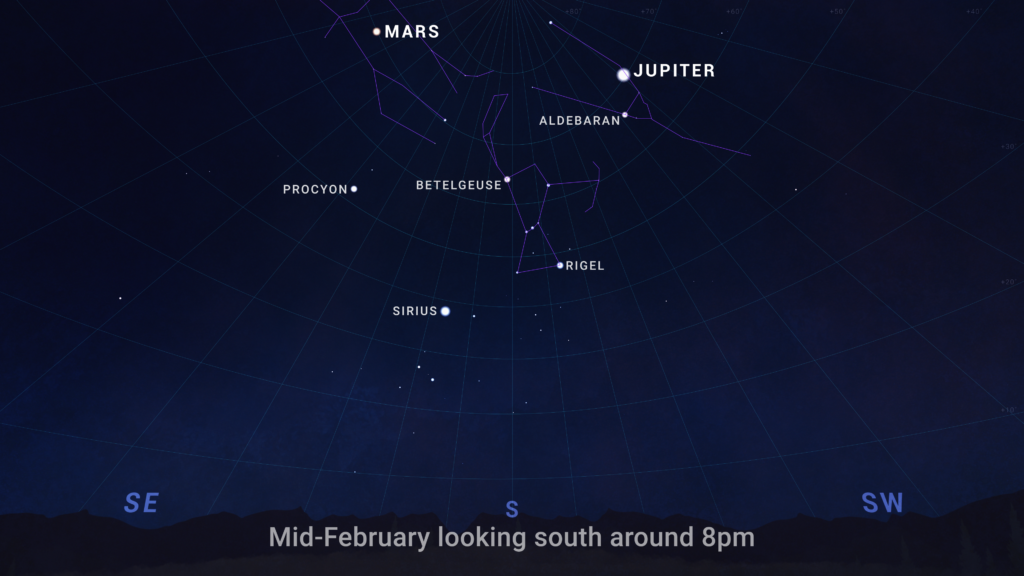February is a Month of Bright Planets, NASA’s Skywatching Update Reveals All!

February is the perfect month for stargazing, as the moon will be engaging with many of the planets in our solar system. If you’re lucky enough to have clear skies, you’ll be treated to an incredible celestial show all month long. NASA’s recent update has given us a sneak peek of what to expect. Let’s dive into the planetary lineup and how you can catch a glimpse of these wonders in the night sky!
Venus: The Star of February
What better way to start February than with Venus, the planet of love? Venus will shine bright in the western sky after sunset. NASA Known as the “Evening Star,” Venus is easy to spot, glowing with a brilliance that symbolizes its connection to the Roman goddess of love. This makes February the perfect time to gaze at Venus, as the planet will be prominent throughout the month.

Jupiter and Mars: The Evening Duo
After Venus, your next best bet is to spot Jupiter and Mars. Jupiter will also make its presence known, standing out in the evening sky. Mars, with its characteristic amber-orange hue, will be identifiable to the naked eye. NASA suggests finding the almost full moon in the east, just below Mars, with the bright stars Pollux and Castor from the Gemini constellation nearby.

Saturn and Mercury: Subtle Yet Stunning
Saturn, though a bit fainter, will still be visible low in the western sky for the first hour after sunset, getting closer to the horizon as February progresses. But the real treat comes at the end of the month, when Mercury makes a rare appearance. Late February will bring Mercury into view about 20 minutes after sunset, just 3 degrees above the horizon. The best part? On February 24, it will be shining particularly bright and will appear right next to Saturn. In fact, Mercury will be about eight times brighter than Saturn on that night!
Best Viewing Tips
For those looking to capture the best view of these celestial bodies, you don’t need much—Venus, Jupiter, and Mars can easily be seen with the naked eye. However, binoculars or a telescope will enhance your experience, providing sharper, NASA more detailed views of these planets. Saturn and Mercury will be a bit trickier to spot without additional help, so a pair of binoculars or a telescope will come in handy. But, on clear nights, away from city lights, both planets can still be seen with the naked eye.
As February progresses, the moon will also make fascinating appearances alongside planets, creating dynamic alignments. On clear nights, stargazers can enjoy watching the moon’s position shift relative to Venus, Jupiter, and Mars, creating stunning visual displays. For those interested in more detailed views, NASA recommends using a telescope to catch the finer details of Mercury and Saturn as they make their way across the sky. Keep your eyes peeled—February’s night sky promises a celestial show!

A Closer Look at Mercury
If you’re a fan of close-up space photography, don’t miss out on the stunning images of Mercury taken by the European Space Agency’s BepiColombo spacecraft. These images provide a detailed and mesmerizing look at Mercury, offering a unique perspective on this often-overlooked planet.
Conclusion: A Sky Full of Wonders
Whether you’re a seasoned skywatcher or a casual observer of NASA, February promises plenty of opportunities to witness the moon’s interactions with various planets. From the bright shine of Venus to the faint glow of Saturn, there’s no shortage of beauty to admire in the night sky. So, grab a blanket, get comfy, and prepare for a stellar month of cosmic wonders!






